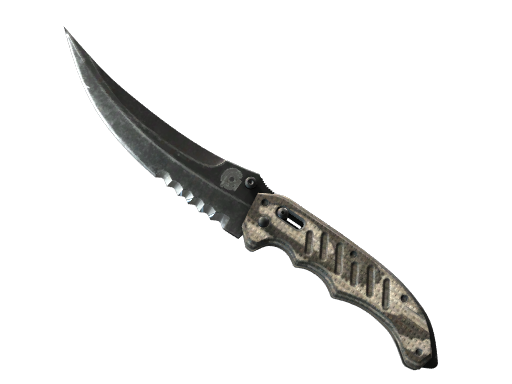Understanding CS2 Floats for Profitable Trade Ups
By chod on May 03, 2025
Understanding CS2 Float Theory for Profitable Trade Ups
In Counter-Strike 2 (CS2), mastering CS2 Float theory is key to maximizing your Trade Up profits. Float values determine the condition of a skin, directly impacting its market value and the outcome of Trade Up Contracts. At TradeUpLab, we’re here to break down how float affects your Trade Ups and share strategies to use this knowledge for better profits in 2025. Let’s dive into the science of CS2 Float and its role in skin trading!

What Is CS2 Float and Why Does It Matter?
A float value in CS2 represents a skin’s wear level, ranging from 0.00 (Factory New) to 1.00 (Battle-Scarred). Lower floats indicate better condition, making skins more valuable. In Trade Up Contracts, the float value of your output skin is determined by the average float of your ten input skins, making float a critical factor in profitability.
- Higher Value: Factory New skins (0.00–0.07) often sell for significantly more than Battle-Scarred ones (0.45–1.00).
- Trade Up Impact: A low average float increases your chances of getting a high-value output skin.
- Market Demand: Collectors and traders prefer low-float skins, driving up their prices.
How Float Affects CS2 Trade Up Outcomes
The Float Formula in Trade Ups
The float value of your output skin is calculated using this formula:
Output Float = (Max Float - Min Float) * Average Input Float + Min Float
For example, if you use ten Factory New skins with float values of 0.01 to 0.07, the average float is 0.04. If the output skin’s float range is 0.00–0.50, the formula might yield a float of 0.02—likely a Factory New skin, which commands a higher price.
Float Ranges and Skin Conditions
Different skins have unique float ranges, affecting their possible conditions:
- Factory New: 0.00–0.07
- Minimal Wear: 0.07–0.15
- Field-Tested: 0.15–0.38
- Well-Worn: 0.38–0.45
- Battle-Scarred: 0.45–1.00
Knowing the float range of your target skin (e.g., AK-47 | Ice Coaled) helps you predict its condition and value.
Strategies to Leverage Float for Trade Up Profits
Strategy 1: Use Low-Float Input Skins
Always prioritize input skins with the lowest possible float values. For example, using ten Factory New skins with floats of 0.00–0.05 can result in a Factory New output, significantly increasing its market value.
Strategy 2: Target Skins with Wide Float Value Gaps
Choose Trade Up targets where the price difference between Factory New and lower conditions is substantial. For instance, a Factory New M4A1-S | Player Two might be worth $80, while a Field-Tested version is only $30. A low-float Trade Up can net you a high-profit outcome.
Strategy 3: Use a Float Calculator
Tools like the Trade Up Calculator on TradeUpLab or TradeUpSpy can calculate the average float of your inputs and predict the output condition, helping you make informed decisions.
Strategy 4: Focus on High-Demand Collections
Combine low-float skins with collections that have desirable outcomes, such as the 2021 Vertigo Collection. This increases your chances of landing a high-value, low-float skin like the USP-S | Black Lotus.
Real-World Example: Float-Driven Trade Up Success
Here’s how float theory can lead to profits:
- Goal: Trade up to a Restricted skin from the 2021 Dust 2 Collection.
- Input Skins:
- 10x Mil-Spec skins (e.g., SSG 08 | Mainframe 001, ~$0.50 each, Factory New, float 0.01–0.05).
- Average Float: 0.03.
- Outcome: M4A4 | Red DDPAT (Factory New, float 0.02, ~$15).
- Profit: $10 after Steam fees, thanks to the low-float output.
Common Float-Related Mistakes to Avoid
Don’t let these errors hurt your Trade Up profits:
- Using High-Float Skins: High floats (e.g., 0.50+) result in Battle-Scarred outputs, which are less valuable.
- Ignoring Float Ranges: Some skins can’t achieve Factory New condition—check the range before trading.
- Skipping Float Analysis: Always calculate the average float to predict your outcome accurately.
How TradeUpLab Helps You Master CS2 Float Theory
At TradeUpLab, we make float theory actionable with tools and resources:
- Trade Up Calculator: Compute average floats and predict output conditions.
- Float Guides: Learn how to identify and source low-float skins.
- Market Insights: Track prices of low-float skins for better Trade Up decisions.
Conclusion: Use CS2 Float Theory to Boost Trade Up Profits
Understanding CS2 Float theory can transform your Trade Up strategy, leading to higher profits in CS2 skin trading. By using low-float skins, targeting high-value outcomes, and leveraging tools like TradeUpLab, you can consistently achieve better results. Start applying these float strategies today and visit TradeUpLab to optimize your next Trade Up!

